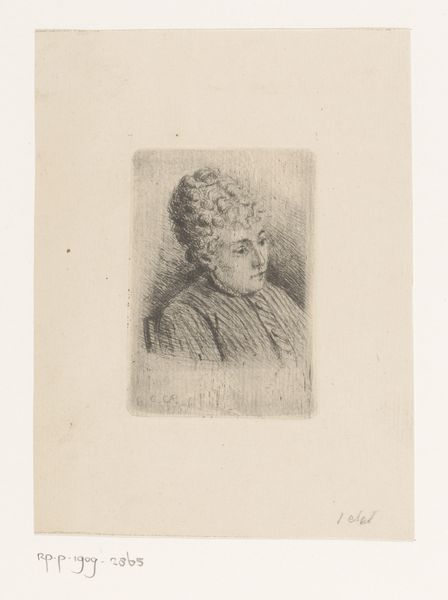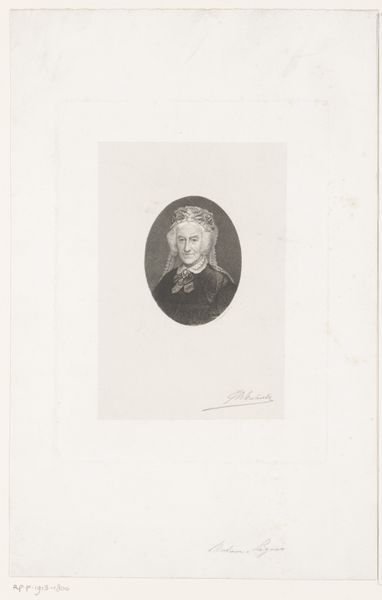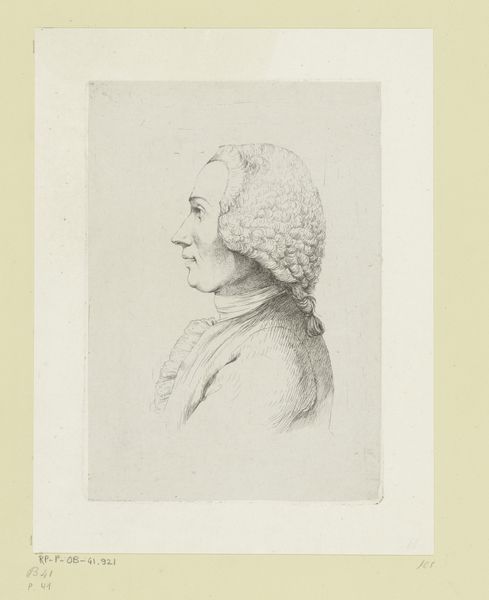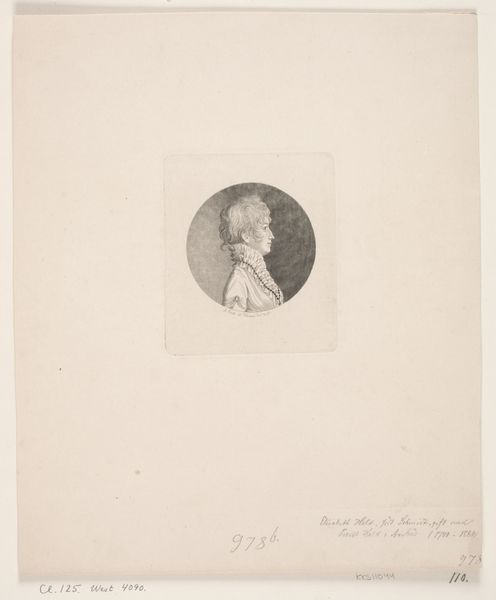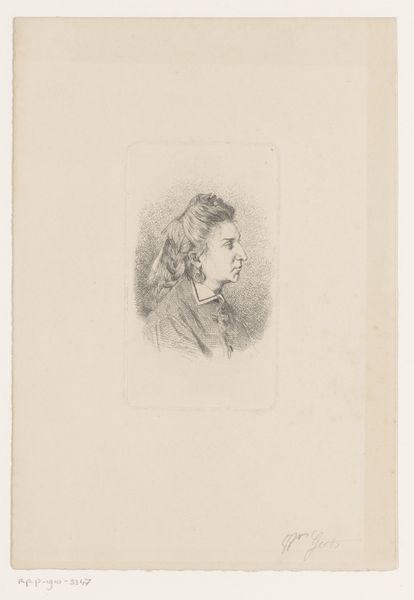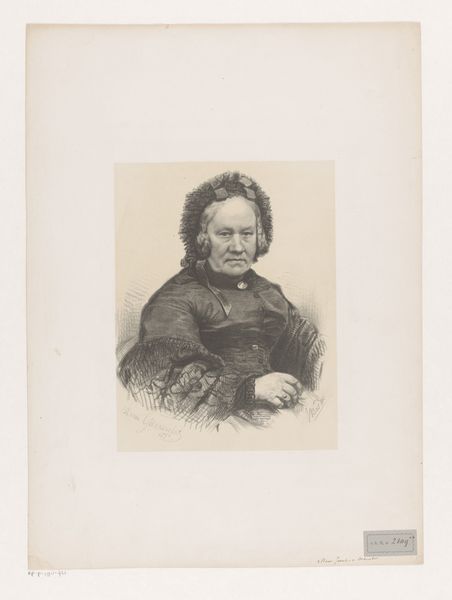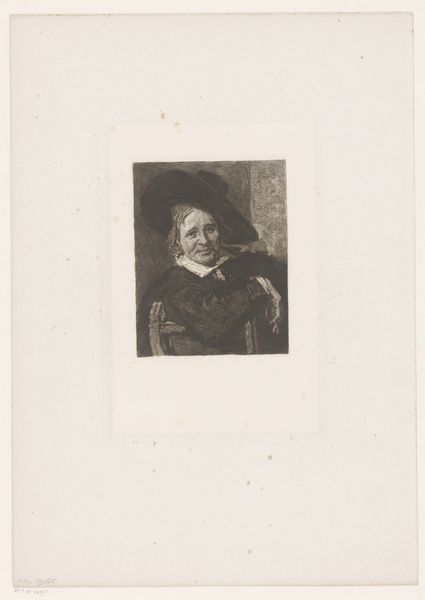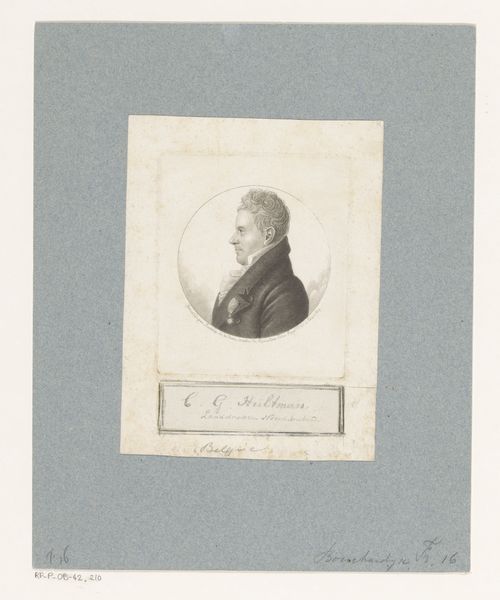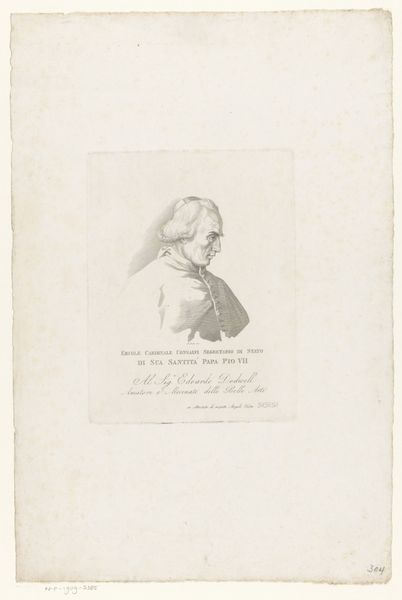
The artist's mother, haed and bust: three quarters right 1800
0:00
0:00
ignacejosephdeclaussin
Rijksmuseum
drawing, print, etching, paper, ink
#
portrait
#
drawing
#
neoclacissism
#
light pencil work
#
self-portrait
#
ink paper printed
# print
#
etching
#
paper
#
ink
#
monochrome
Dimensions: height 105 mm, width 107 mm
Copyright: Rijks Museum: Open Domain
Ignace-Joseph de Claussin created this etching of his mother in the first half of the 19th century. The composition is deceptively simple: a head and bust, rendered in three-quarter view, set against a pale background. Yet, it is the artist's mastery of line and tone that commands our attention. Notice how Claussin uses densely packed, almost chaotic lines to define the contours of her face, contrasting sharply with the smoother, more uniform strokes that suggest the fall of light across her shawl. This contrast is not merely descriptive; it serves to emphasize the complex topography of age, the wrinkles and folds that map a life lived. The materiality of the etching—the way the ink sits on the paper, creating a subtle relief—further enriches this sense of texture and depth. One might also observe the semiotic interplay between the subject's attire and expression. The mother's modest clothing and stoic gaze suggest a woman of quiet dignity. Ultimately, this image is a meditation on the nature of representation itself. It reminds us that a portrait is never a mere likeness but a construction, shaped by the artist's hand.
Comments
No comments
Be the first to comment and join the conversation on the ultimate creative platform.
